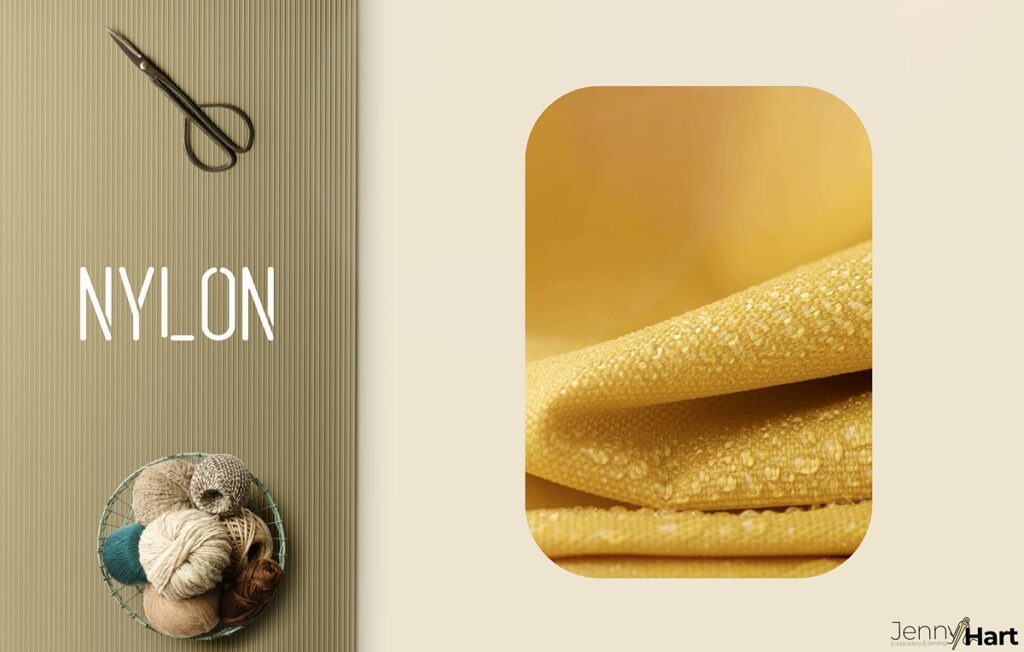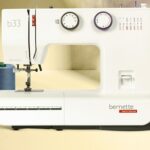With so many elastic fabrics available on the market, choosing the one that will meet all your needs and expectations can be difficult. So, one reason you are reading this is most likely that you’re considering buying or perhaps even creating clothing items that require such type of fabric, but you’re caught in the dilemma about whether to go for spandex or nylon.
Well, if this is really so, you’ve clicked on the right article, as here I’ll present the basic features of these two types of fabric and explain their differences, which I hope will remove your “spandex vs nylon” confusion and help you make the right choice. So, let’s jump right in.
Key Takeaways
- Spandex and nylon are rarely used to make pure spandex and nylon fabrics and garments. They’re usually combined with other fabrics.
- These types of fabric are commonly used to make activewear, swimwear, undergarments, and hosiery.
- There are 5 main features that make them different. These features include their production process, elastic and moisture-wicking properties, and cost and how comfortable they are.
Spandex vs. Nylon – How Do They Differ?
Considering the fact that most people’s wardrobes contain plenty of different clothing items made of spandex or nylon, I believe there’s no need to emphasize how important these fabrics are in the textile industry for making garments and other fabrics that require flexibility, comfort, and elasticity.
In addition to being both synthetic fibers, spandex and nylon are versatile as they’re used for making various clothing items such as sportswear, underwear, swimwear, pants, leggings, yoga pants, stockings, and socks.
What I like about both fabrics is that they’re very soft, stretchy, comfortable to wear, stain- and wrinkle-resistant, and they dry quickly. I mean, what else could you look for in a fabric?
Also, make sure you read about other types of sheer fabric.
Let’s See Some Of Their Features

Now that I’ve briefly introduced spandex and nylon and mentioned their similarities, let’s compare them even further and see how they differ.
Production Process
Both spandex and nylon are synthetic fabrics. However, their production involves different processes. The most common method used for producing spandex is the solution dry spinning method, which involves producing different chemical reactions.
The production of spandex fibers begins by creating a prepolymer, which is then combined with diamine acid. At this stage, different substances are added to this mixture in order to make the fibers more elastic and resistant to heat and water.
Next, the mix is thinned down and placed in a container called a cylindrical cell where the spandex fibers will be produced. The mix then passes through a device that has tiny holes and after it gets heated, it turns into many strong fibers.
These fibers are later twisted and treated with polymers before they’re finally packaged. By the way, there are typically no fabrics or garments consisting of 100 percent spandex. Spandex is usually combined with polyester, nylon, or cotton in the manufacturing of fabrics.
When it comes to nylon, this fabric comes in different types and the majority of them are made of polyamide monomers. For the production of nylon to begin, a specific monomer needs to be created first. This is achieved by obtaining diamine acid from crude oil, which is later mixed with adipic acid to create the nylon salt polymer, which is also known as PA 6,6.
Then, this polymer is exposed to a very high temperature in order to undergo a change in state and transform into a liquid, which is later forced through a spinneret. Once the liquid exits through the tiny holes of this device, it creates solid nylon fibers. In order to enhance the stretch properties and strength of the fibers, manufacturers stretch them, and finally, spin them into fabric.
It’s noteworthy that although solid nylon fibers can be used to form pure (100%) nylon material, they’re usually combined with spandex, polyester, or cotton to make fabrics.
Elasticity
The reason why spandex is so commonly used in combination with other fabrics for making activewear, swimwear, hosiery, and underwear is its wonderful elastic properties. This important property can be attributed to its major constituent – the elastic polymer polyurethane.
Thanks to this polymer, spandex is characterized by great flexibility, comfort, and elasticity, which also allows it to restore its initial size and shape regardless of how many times or how much it’s been stretched.
On the other hand, nylon does have stretch properties, but it’s less elastic than spandex. You can’t stretch it as much as you can do so with spandex. In fact, how much nylon can get stretched is determined by what materials it’s combined with and how it’s made.
For instance, 100 % nylon fabrics or clothing items don’t stretch. Knitted nylon fabrics are difficult to stretch too. But during the manufacturing process, the nylon fibers can be arranged in a certain manner to give the material some elasticity.
Moreover, if a nylon fabric is too overly stretched, not only can this cause it to get deformed but also break down. Nevertheless, this fabric is commonly used for making any garment that needs to be stretchy and tight-fitting.
Comfort
Being made of light, soft, highly elastic, and sturdy fibers, spandex is very comfortable to wear. What I like about it is that it adjusts to your body shape and it simply moves with you.
When you’re wearing clothing items made of spandex, you feel like you’re not wearing anything due to the comfort they provide you with. In fact, this is one of the main reasons why this fabric is very commonly used for making sportswear, hosiery, undergarments, and swimwear.
When it comes to nylon, you’ve likely heard that it’s being praised for being comfortable to wear just like spandex, but in reality, it’s less comfortable than the latter as it’s a bit rigid. Moreover, wearing pieces of clothing made of nylon very often can lead to skin scratches.
That’s the reason why socks, stockings, or tights that are only made of nylon tend to be less comfortable, less soft, less stretchy, and less durable than those that are a blend of nylon and spandex.
Also Read: Is It Possible To Bleach Nylon Fabric
Moisture-Wicking Properties

One of the main features that make spandex stand out from the rest of the fabrics is that it’s moisture-wicking. This means that once spandex fibers get into contact with moisture, such as water or sweat, they transfer the moisture to the surface of the fabric where it’ll evaporate.
So, if you’re looking for sportswear, such as running or cycling shorts, leggings, or perhaps underwear, tights, or stockings that won’t suck up moisture and will keep your skin dry regardless of how much you sweat, make sure you choose clothing items that have a lot of spandex.
When it comes to nylon, this fabric tends to trap water, sweat, bacteria, heat, and odors within its yarns. Of course, depending on what material nylon is blended with, its moisture-wicking properties can improve. For instance, nylon spandex fabric is praised for being great at wicking away moisture from your skin.
Cost
Spandex fabrics and garments tend to be pricier than other synthetic fabrics, like polyester, or even some organic ones as the production process of this type of fabric is a bit strenuous and requires a significant amount of effort and time.
When it comes to nylon, it might have been costly when it was first produced, but nowadays, it’s sold at a relatively affordable price. Moreover, it tends to cost even less when it’s blended with other materials.
Also, make sure you read the comparison of spandex vs elastane.
Final Verdict
In this article, I’ve compared spandex and nylon, which are among the most commonly used fabrics to make stretchy, comfortable, and form-fitting garments as well as other materials that call for elastic properties.
As both types of fabric have good and bad sides, choosing which of them is better is a little bit tricky. But if you ever get to make this choice, I’d recommend that you go for spandex. It may cost more than nylon, but it’s more elastic, softer, and more comfortable and has great moisture-wicking properties.
I graduated from London College of Fashion, and I’ve been working for a Fashion Design company for 10 years. My other hobbies are going to the gym and reading.



